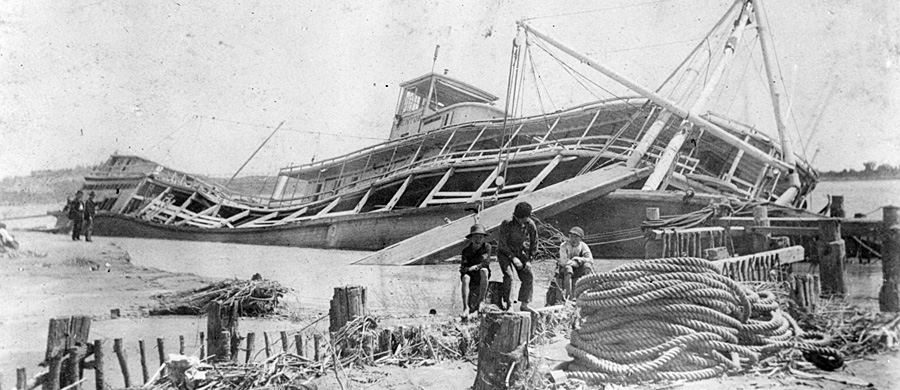Snag Removal & Bank Stabilization Projects
Modifications to the Missouri River began in the river’s lower reaches, below Kansas City, including efforts to rid the channel of snags, and to construct bank stabilization projects. Snags are trees and branches lodged in the riverbed. Many steamboats were sunk or damaged by large snags. Steamboats needed reliable water depths, and bank stabilization projects using rock and other materials maintained channel banks and helped keep flows deeper in a more defined channel.

The primary goal of early Missouri River snag removal and bank stabilization projects was to aid commercial steamboat traffic. Cities along the river occupying land in the river’s floodplain grew and prospered as steamboat navigation expanded and westward settlement increased. Many riverside city developments were vulnerable to flooding and bank erosion, and bank stabilization projects were also pursued to protect them and commercial interests.
